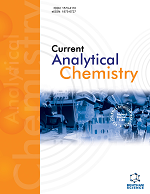
Full text loading...
We use cookies to track usage and preferences.I Understand

In recent years, the substantial influx of heavy metal pollutants into aquatic environments due to human activities has emerged as a critical issue. Heavy metals are characterized by their high toxicity, persistence, and resistance to degradation, which not only result in significant economic losses but also exert severe impacts on ecosystems and human health. Microalgae, due to their adsorption capacity for heavy metals, have become a new avenue for the biological remediation of heavy metal pollution in aquatic environments. With the advantages of low cost, renewability, environmental friendliness, and strong adaptability, microalgae showed broad application prospects in the management of heavy metal pollution. This manuscript provides a comprehensive review of microalgae-based remediation of heavy metal pollution in aquatic environments. It examines the factors influencing heavy metal adsorption by microalgal cells, compares the adsorption capacities of different algal species, and evaluates the adsorption effectiveness of live versus dead algal cells. The review also summarizes the mechanisms of heavy metal accumulation and transfer in microalgae and identifies future research priorities and directions for enhancing the heavy metal enrichment capabilities of microalgae.

Article metrics loading...

Full text loading...
References


Data & Media loading...